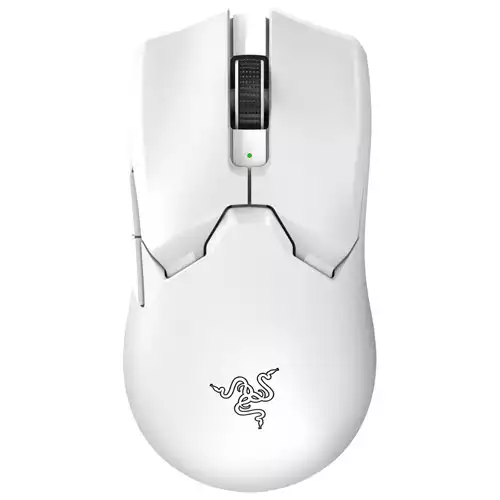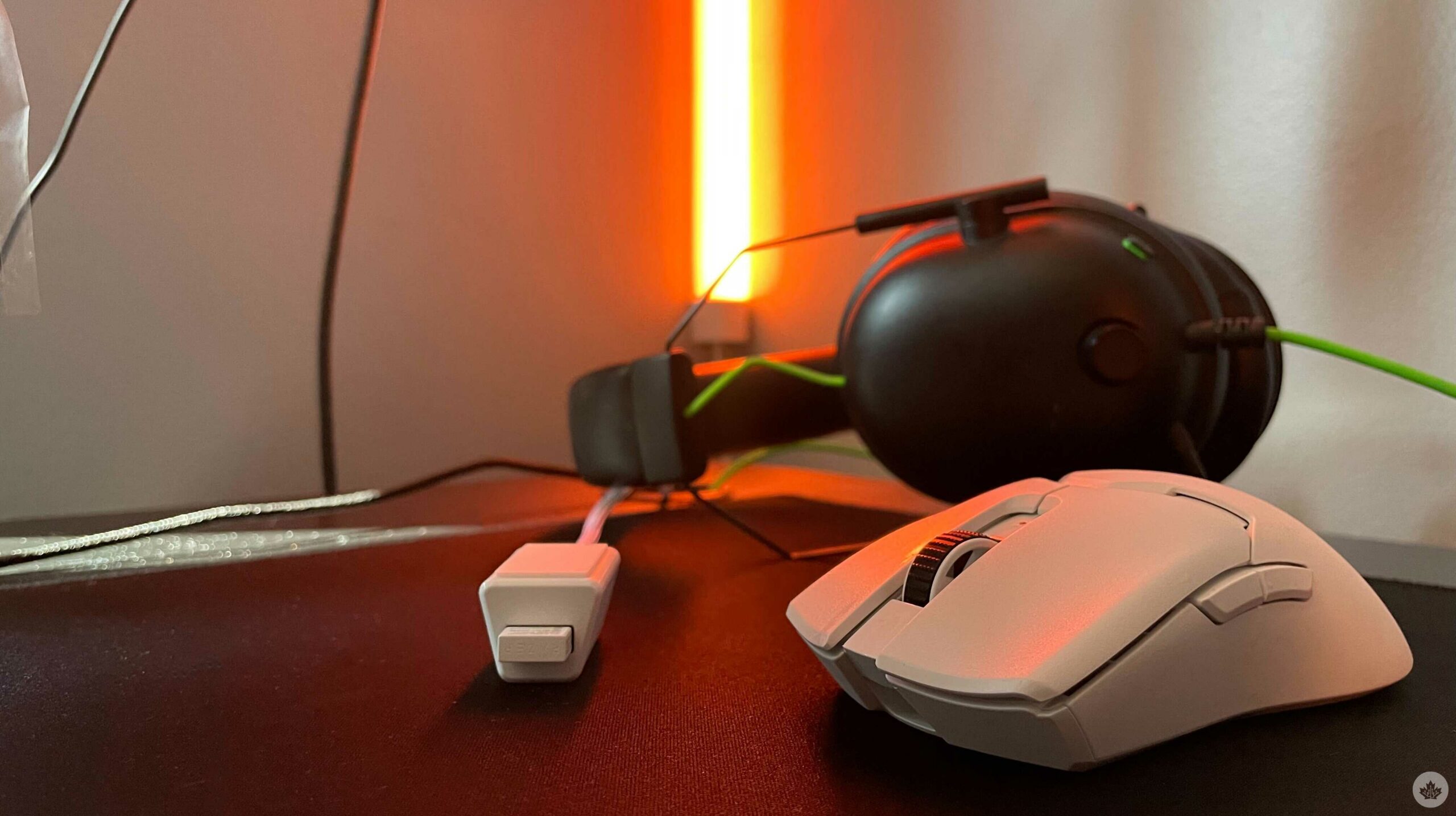
The gaming peripheral market is too saturated, but some staple names continue to stand out.
Razer comes out with heavy hitters consistently, but its latest Viper V2 Pro gaming mouse combines the company’s technical prowess with a fluff-less layout that makes the mouse suitable for those looking for a high-performance mouse and nothing more.
Its design is similar to the company’s 2021-released Viper 8K, or the 2019-released Razer Viper Ultimate, without the pronounced side grips.
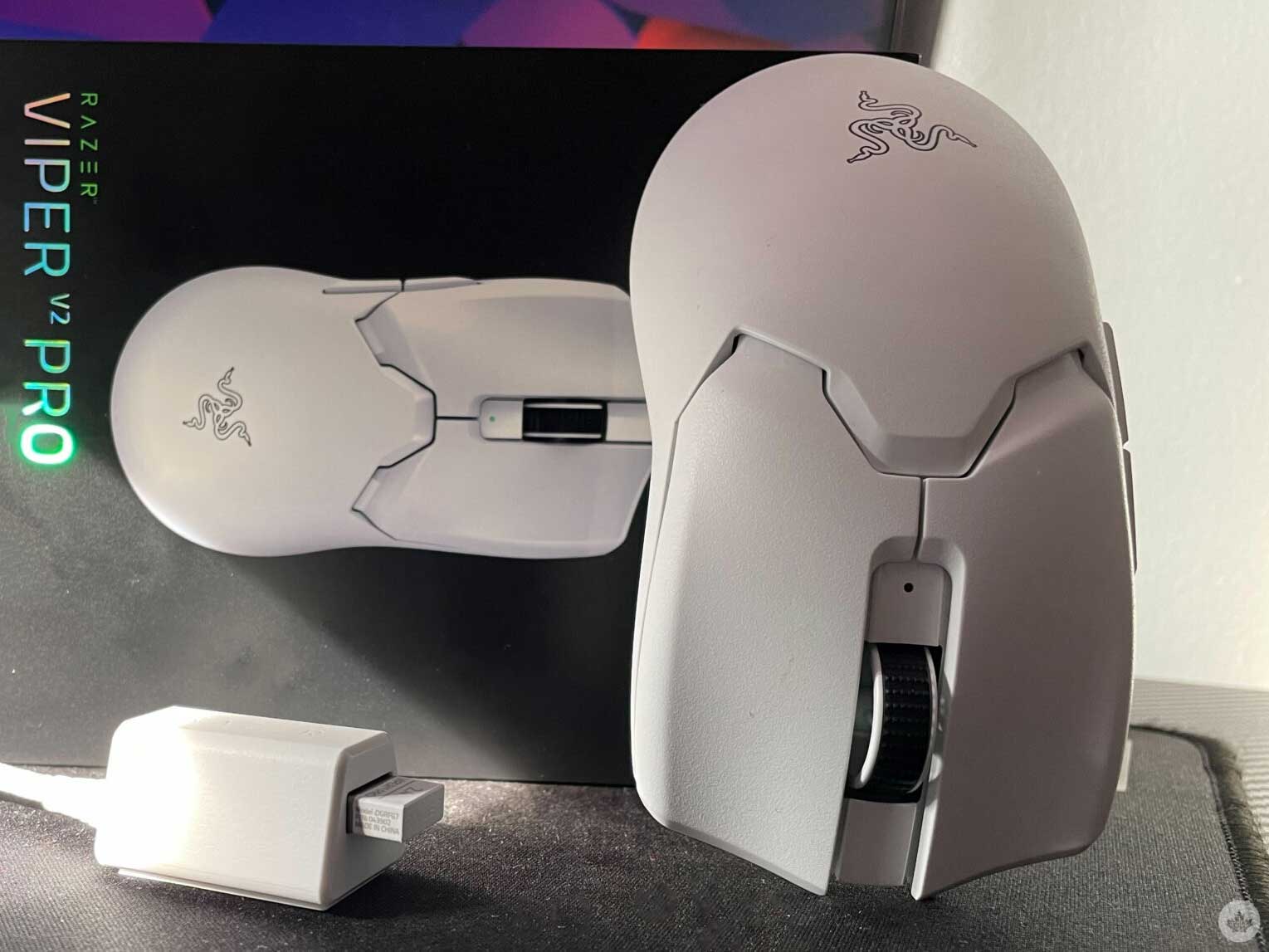
For starters, the mouse has no RGB lights, not even on the iconic three-headed snake Razer logo. According to Razer, the Viper V2 Pro is the lightest mouse it has created, and thus getting rid of anything not pivotal to the mouse’s core performance was important. Getting rid of the RGB also helps in conserving the battery, which we’ll touch upon later.
It weighs in at just 58g, making it lighter than the 59g Cooler Master MM731, though using it feels like the difference isn’t just 1g, and instead, much more.
Further cutting down on weight, Razer got rid of the two side buttons on the right, while retaining the two left-aligned side buttons, making the Viper V2 Pro suitable for right-handed people. That being said, if you can use your ring or pinkie finger to press the side buttons, the mouse feels and fits equally well in the left hand.
Razer also scrapped separate DPI and Power On/Off buttons in favour of a single button that takes on both the duties, along with eliminating the bottom-placed compartment that holds the 2.4GHz dongle in favour of a USB-C adapter that connects to the dongle.
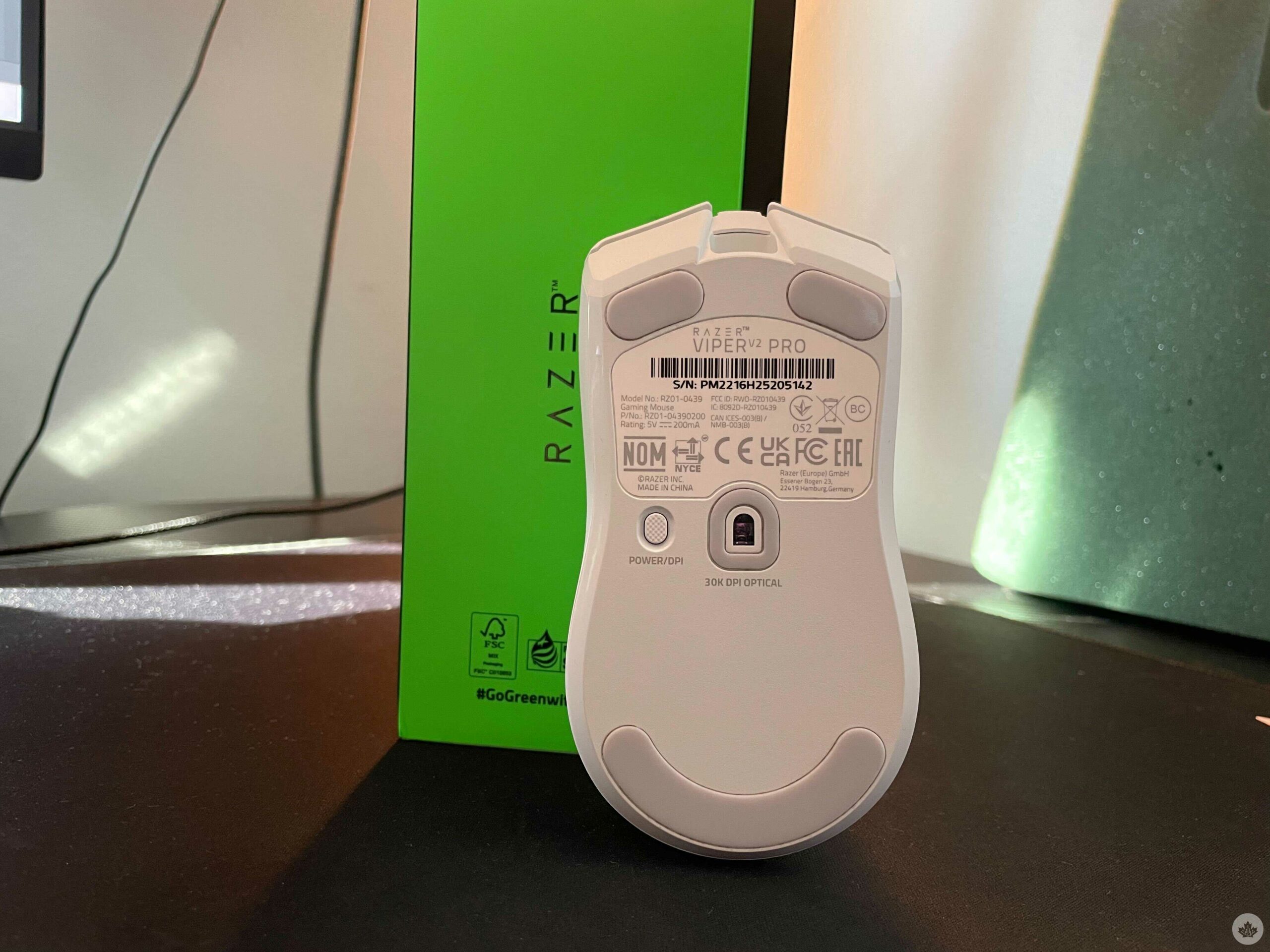
You see? The overall trend here is to get rid of anything that would add to the mouse’s weight while not compromising on performance.
I’m using the matte-white version of the mouse, however, a matte-black version is also available, so you can match the mouse with your other peripherals.
In the box, which to my delight smells like a new car’s leather seats, you’ll receive Razer’s textured stock grip tape for added traction, though I haven’t felt the need to put them on. The matte design is similar to the Steelseries Aerox 3, and the mouse feels grippy enough as it is, at least while it’s still new. Adding the grip tape would contribute to excess weight, taking away from the mouse’s pivotal ultra-lightweight selling point.
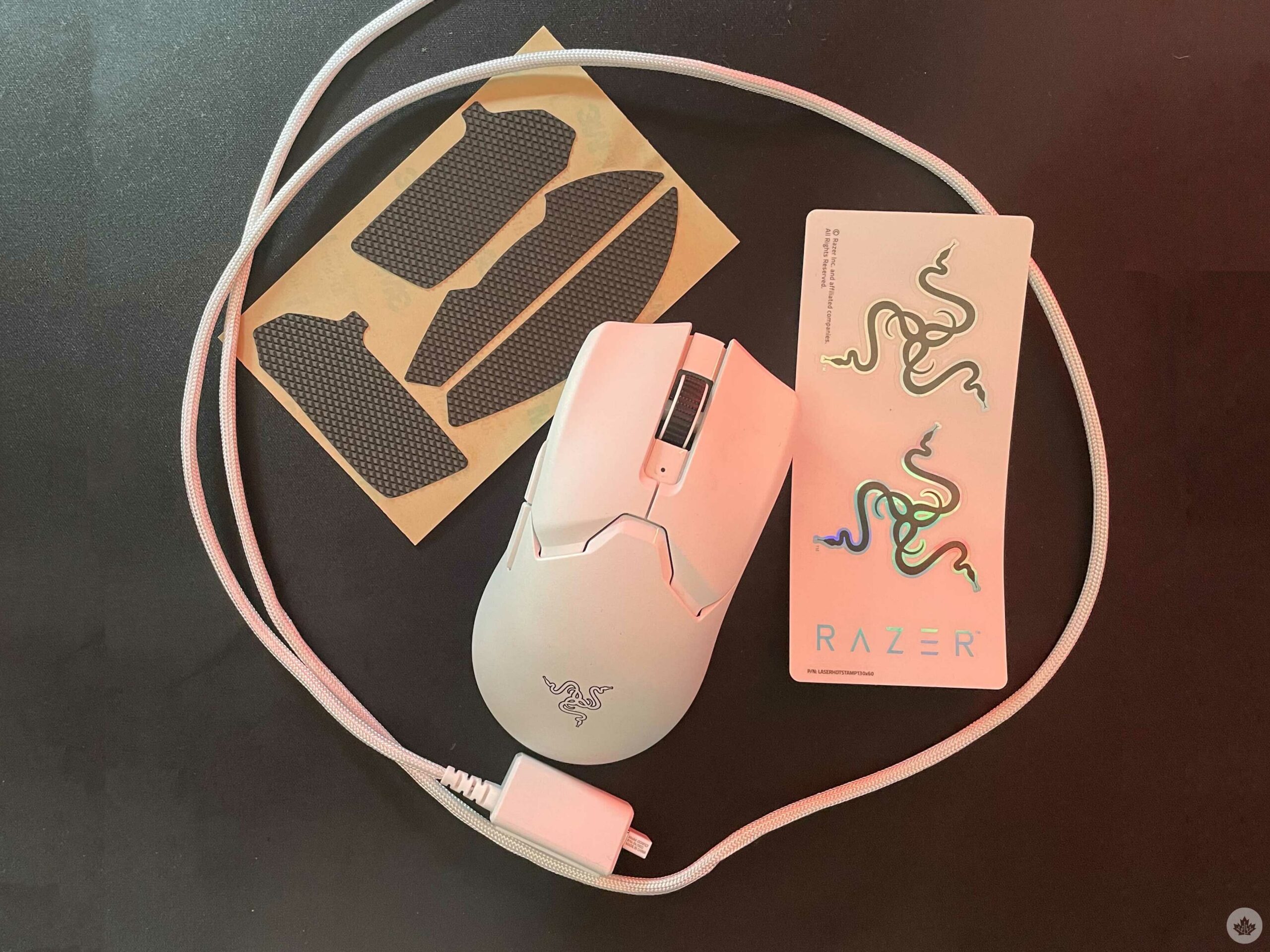
Additionally, the grip tape is black and the model I’m using is completely white, so it would look plain ugly if I were to put them on.
The box also contains a USB-A to USB-C speedflex cable with the accompanying 2.4GHz dongle adapter and the most important thing, two Razer stickers.
I use the mouse for about ten to eleven hours per day, which includes eight hours of work time and about two to three hours of gaming. I’ve had the mouse connected via the 2.4GHz wireless connection throughout the entirety of last week, and I’ve only had to charge it once.
And while Razer says that the mouse contains a smaller battery than its predecessors (cutting weight), the difference is negligible. According to official numbers, the battery is good for eighty hours per charge, which sounds like an overstatement. In my experience, the fifty to sixty-hour mark seems to be the correct battery life.
Coming back to the lights, well, I lied. The mouse does feature a small dot-LED right below the scroll wheel to display battery percentages and DPI.
The indication blinks red twice in repeated intervals to indicate that the battery is below 5 percent, whereas an orange, yellow or green light indicates that the battery is above 25, 50 and at 100 percent, respectively.
Similarly, pressing the DPI/Power on-off button lets you cycle through different DPI presents to match your playstyle. A red light indicates that the DPI is on preset number one, which is 400 by default. Preset numbers two, three, four and five are set at 800, 1600, 3200 and 6400, and are denoted by green, blue, cyan and yellow light, respectively. You can alter the presets according to your needs from Razer’s Synapse app.
On the app side of things, Synapse lets you do what any other mouse software would let you. Adjusting DPI, setting DPI presets, polling rate (125, 500 and 1,000), power-saving settings and smart tracking calibration. Nothing new to see there.
Performance-wise, the Viper V2 Pro is a delight to use. According to Razer, it updated the mouse’s PTFE feet to a more optimal shape, which is evident by how smoothly it glides across my mousepad. It tracks accurately even when used directly on a wooden or glass table as well, though that is sure to expedite the wear and tear on the PTFE feet and the bottom sensor.
Oh, and about the sensor, the Viper V2 Pro features Razer’s latest Focus Pro 30K Optical Sensor that it developed alongside Pixart. The sensor allows the mouse to reach a peak DPI of 30,000, and comfortably track when used directly on your table.
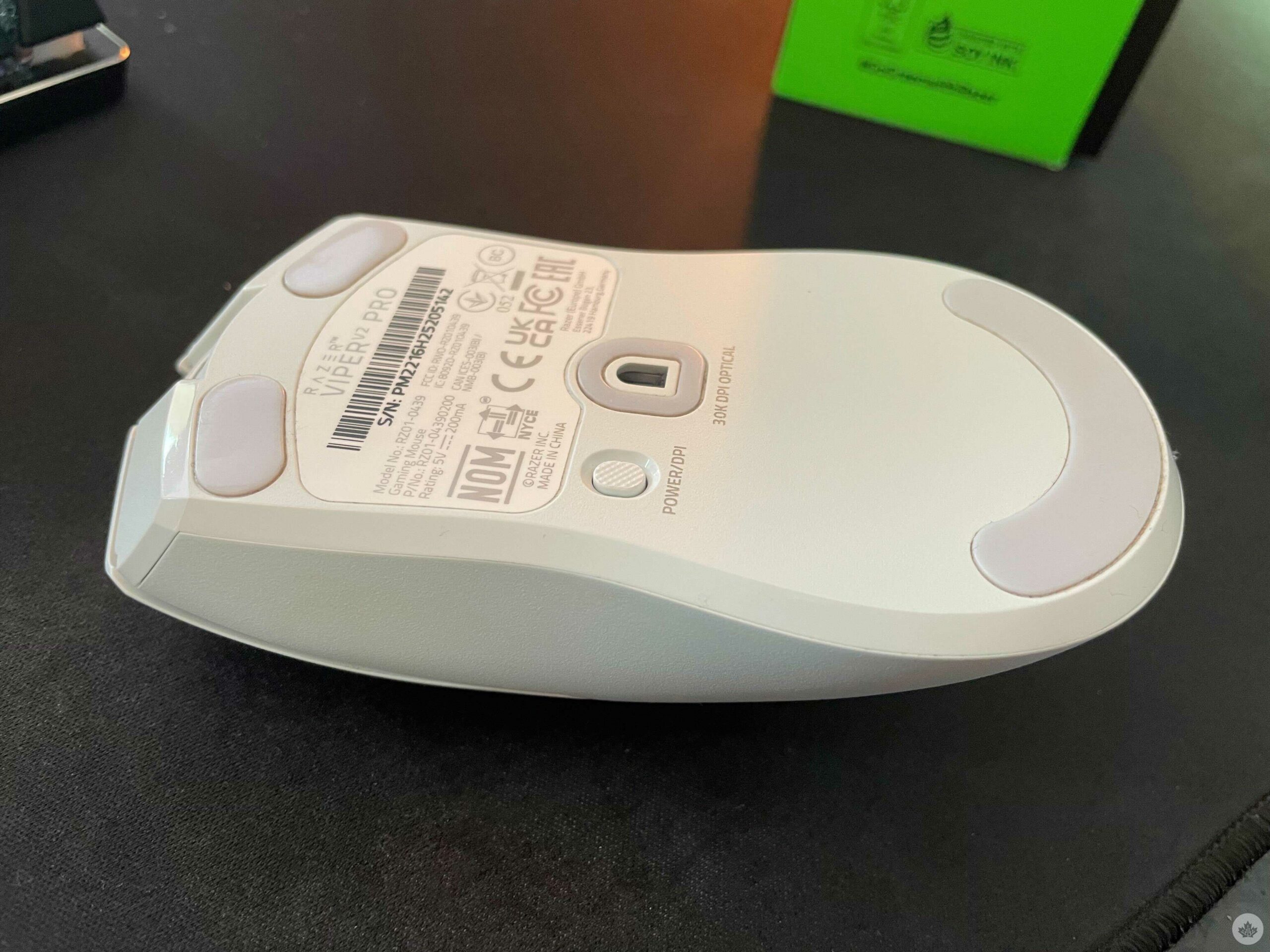
The sensor allows for precise movements, and according to Razer, it has a 99.8 percent resolution accuracy. In my experience using the mouse this past week, I can agree that it tracks precisely, and is uber-responsive, though most of the other gaming mice I’ve used in the same price category work about the same, so I wouldn’t buy the mouse just for the updated sensor.
The clicks on the Viper V2 Pro sound and feel very clicky. The mouse features optical Gen-3 mouse switches, compared to Gen-2 switches uses in older models. Razer says the new switches have a 90 million click lifecycle, and while they feel solid and reliable, only time will tell if they are durable and avoid double-clicks or misclicks.
While the ultra light-weight mouse feels great when playing precision shooters like Valorant or CS: GO, I don’t see myself using it for everyday use; in favour of an ergonomic mouse. Also, I want to save those 90 million clicks for when I need to hit a nasty flick in-game, not for when I’m writing tech news.
The Viper V2 Pro is purely a competitive gamer’s mouse that can be appreciated by the most serious in the craft. Its ultra-lightweight body makes it easy to control, so much so that it doesn’t feel like you’re moving a mouse around, and instead, just moving your wrist and arm. It works on multiple surfaces and has optimized PTFE feet that allow the mouse to glide effortlessly. It includes an upgraded sensor that undoubtedly feels responsive and accurate, but in my opinion, gaming mice from other companies like SteelSeries feel equally responsive.
If you’re looking for an ultra-lightweight gaming mouse, without all the extra fluff, the Viper V2 Pro is worth marrying. If you’re someone who’s just looking for a lightweight mouse, there are cheaper alternatives on the market.
The Viper V2 Pro is available at Razer’s website and Best Buy in Black and White colourways for $189.99
MobileSyrup utilizes affiliate partnerships. These partnerships do not influence our editorial content, though we may earn a commission on purchases made via these links that helps fund the journalism provided free on our website.
MobileSyrup may earn a commission from purchases made via our links, which helps fund the journalism we provide free on our website. These links do not influence our editorial content. Support us here.





